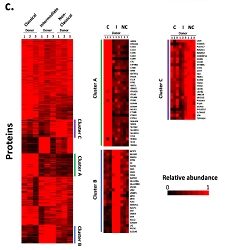
The identities and functions of different white blood cell types are determined in part by their cell-surface proteins - which can also be important markers in the clinic. Monocytes have key roles in inflammatory and immune responses to infection, partly by differentiating into localised tissue macrophages and dendritic cells. Using known surface marker proteins, circulating monocytes are classified into three subtypes (classical, intermediate and non-classical), each with differing biological functions and disease associations. Clinician Dr Ben Ravenhill and colleagues in CIMR’s Weekes Lab and Proteomics Facility present in Scientific Reports the first quantitative proteomic analyses of surface proteins from these monocyte subtypes. Using selective cell surface biotinylation and MS3 mass spectrometry, this study provides new insights into the basis of monocyte diversity and function.

